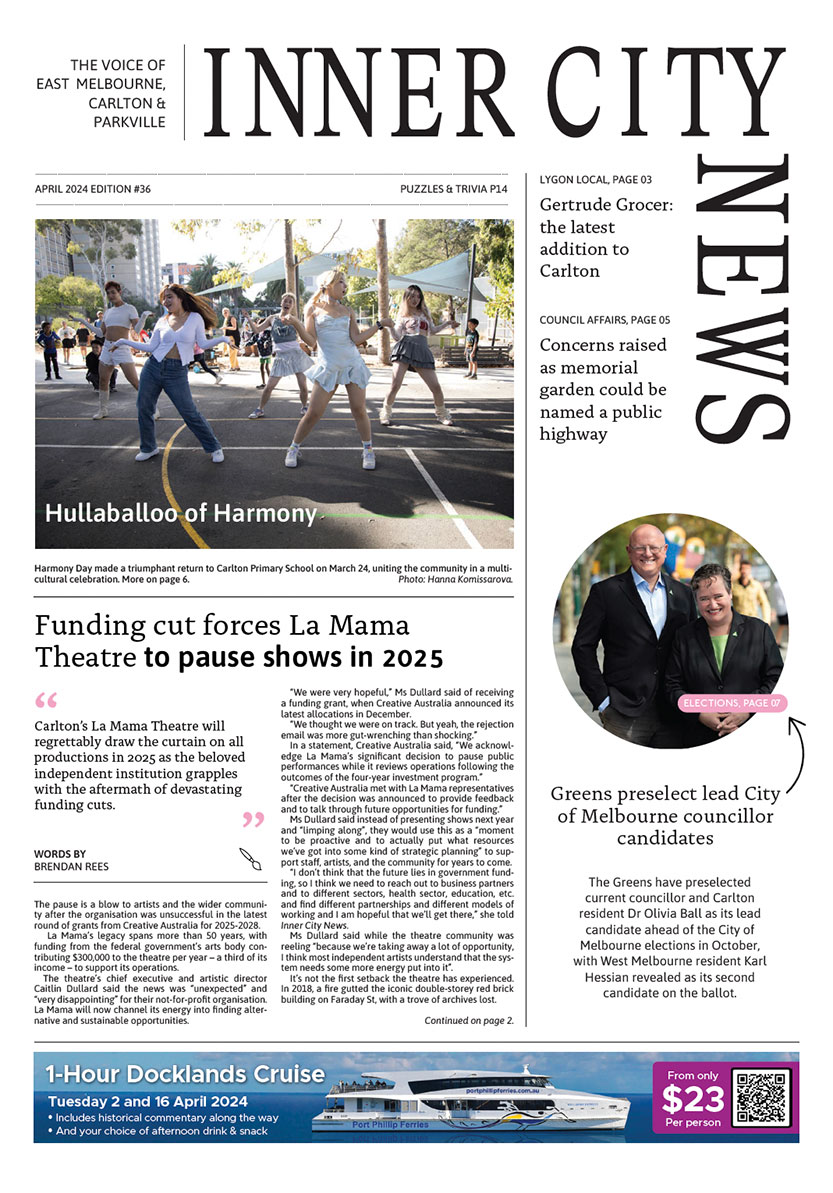Jewish Carlton
There has always been a Jewish community in Melbourne from the time of the earliest settlement. They were mainly immigrants from London and other parts of England, that is, English-speaking and part of the general British population of Melbourne at the time.
Carlton, being close to the business hub and, in particular, to the Queen Victoria Market, was a convenient and popular place, and many Jewish people settled there.
By 1901, according to the census, there were an estimated 5000 Jewish people in Melbourne, and some 40 per cent of them were clustered in the inner city and surrounding areas, including Carlton.
In the 1880s and 1890s however, a change took place in the Jewish population of Melbourne and Carlton. Large numbers of Jewish people started arriving from Eastern Europe, fleeing the anti-Jewish pogroms in Russia, Poland and elsewhere.
These were different from the English Jews who preceded them in that they were Yiddish-speaking, and they looked and sounded foreign to those who had preceded them. Most of them also settled in Carlton.
They continued to come over the decades that followed into the 1920s and 1930s. Immigration of Eastern European Jews reached its peak in the years 1926 to 1928 when some 2000 arrived in Australia. Seventy per cent of them settled in Carlton.
By the early 20th century, the Yiddish-speaking Jewish population was concentrated in and around Carlton, while the Anglo-Jewish community was south of the Yarra around St Kilda. Between the two groups, north and south of the river, there were significant cultural differences and tensions, which persisted for decades. South of the river, Yiddish was rarely heard, but in Carlton it was the everyday language of the community.
After World War Two, a new wave of Jewish immigrants arrived, those who had survived Nazi persecution and the Holocaust in Europe. These were also mainly Yiddish-speaking and they more than doubled the Jewish population of Carlton.
Julie Meadows, who has written books on Jewish Carlton, noted that, despite the trauma they had endured, they helped shape the vibrant social and cultural life of Yiddish Carlton. In an interview with the Australian Jewish News (April 3, 2014), she noted:
“The newcomers, however poor or traumatised, did not come empty-handed. Along with their burden of painful memory, they brought hope, energy and the knowledge of a thousand years of Jewish life and culture; even their wry irrepressible humour. They energised us, became our schoolmates and our shopkeepers; our teachers, musicians and actors; in time, our marriage partners, community benefactors and professional colleagues. Apart from the Yiddish language we all spoke, everybody barracked for Carlton. Yiddish Carlton was a historic necessity that lasted more than 40 years. It served its purpose, and when people were no longer newcomers, they moved away. We need not mourn its passing, but neither should we forget it.” •

Carlton language school championed by Ukrainian refugee




 Download the Latest Edition
Download the Latest Edition